How to Make Apple Scrap Vinegar
This post may contain affiliate links, view our disclosure policy for details.
Learn how to make apple scrap vinegar at home in just a few simple steps. You can use it the same way you’d use apple cider vinegar!
Lady Lee’s Note…
When you live this homesteading lifestyle, you develop an allergy to throwing food away. You see… It takes so much energy to grow food that when success finds you, you’re going to make darn sure that not a single bit of it is wasted.
And if you didn’t eat it, your kids didn’t eat it, your husband didn’t eat it, your mother or his mother didn’t eat it, you didn’t manage to do whatever else with it… Well, the animals will enjoy it and you’ll most likely make sure to use their poop to fertilize the garden! Nothing really goes to waste on the homestead. And we like it that way.
As a homesteader, you also develop the ability to maximize the use of everything. You use whey to make just one more cheese before you use it to make bread. A useless barrel might turn into a dog house, and toilet paper rolls become little tiny pots that you can start seeds in.
Combine the no-waste with the let’s-turn-this-into-something-useful attitude and you can be sure that a homesteader is not going to let a pile of apple scraps go to the compost pile or the chickens before he or she squeezes the life out of it.
And so, what shall a homesteader do with a pile of perfectly beautiful apple scraps? Well, apple scrap vinegar, of course!
What is Apple Scrap Vinegar…
Apple scrap vinegar is a simple way to turn apple scraps into apple vinegar. Is apple scrap vinegar the same as apple cider vinegar? No, it’s not.
Apple cider vinegar is made with real, raw apple cider that has enough natural sugar in it that you don’t have to add additional sugar when you’re making vinegar.
Apple scraps, still have a lot of great apple taste in them (and natural yeast which is required for the fermentation process) but they don’t have enough sugar to carry the fermentation process so to help them we add a bit of sugar into the mix.
Apple cider vinegar is healthier and maybe richer and flavorful. If you want to learn more about making real apple cider vinegar, check out this great post.
I like keeping things simple… and to tell you the truth, I don’t care much for vinegar, any kind. I simply don’t like the taste.
Yet, it’s an ingredient that has to take some space in any home because there are simply way too many things you can do with it aside from drinking it or using it to prepare food.
So, Apple scraps vinegar is good enough for me. It might not be as “real” as apple cider vinegar, but it’s still very close to it.
Ingredients…
- Apple scraps – since we are using apple scraps; peels and cores, it’s best to use organic apples. If you don’t use organic apples that’s fine too just make sure to wash your apples well before you peel them.
- Water – use non-chlorinated water.
- Sugar – we are going to use one tablespoon of sugar per one cup of water to cover the apple scraps with. This sugar will feed the bacteria that is responsible for the fermentation process and at the end of the process it will all be gone.
Tools…
Step-By-Step Instructions…
Step One – fill the jars. Start by adding apple scraps (can be peels and cores) to a jar so they fill about 3/4 of it.


Step two – add water. Dissolve one tablespoon of sugar in each cup of water and add to the jar. Make sure to leave a couple of inches of headspace.


Step three – ferment. Place a fermentation weight on top of the apple scraps so they are all submerged under the water. Cover the top of the jar with a thin flour sack towel and secure it with a rubber band to allow air in but keep the flies away.
Place the jar at room temperature on the counter to ferment for two weeks. Some leave their jar to ferment up to six weeks. I find that two weeks work for me but you can adjust this time. The longer you let it sit, the stronger it will be.
After a few days, you’ll notice the fermentation bubbles. Apple peels have natural yeast in them, and the good bacteria that is developing in the process is busy breaking down the sugar we added to the water.
Note… If at any point in the process you notice a brown, jelly-looking thing floating on the top, this is a mother, a colony of good bacteria. It means that your vinegar is doing great. Don’t throw it away, read more about it and how to use it in the FAQ section below.


Step four – strain. After two weeks (or more if you choose to leave your apple scrap vinegar longer), it’s time to strain the vinegar and remove the scraps.
Place a strainer over a large bowl and pour the jar onto the strainer. The strainer will catch the apple scraps, and the bowl will catch the apple scrap vinegar.
Place the apple scraps in the compost bucket and use the strainer to strain the vinegar again. Place the strainer over a clean jar and run the vinegar through it and into the jar. Cover the jar with the thin towel and secure it with the rubber band. Let the vinegar sit at room temperature for another two weeks or so to get the final vinegary taste and smell.
How to Store Apple Scrap Vinegar…
After a couple of weeks, you can close the jar and store it. Some like keeping it in the fridge; I just leave it in one of my kitchen cupboards, and it seems to be happy there at room temperature.
Vinegar can keep indefinitely. It will get stronger at the beginning, and then if you don’t use it, it will gradually weaken.
How to Use Apple Scrap Vinegar…
You can use this apple scrap vinegar the same exact way that you’d use apple cider vinegar!
- In soups and stews – try adding a splash to this bean soup or pea soup or use your apple scrap vinegar in any recipe that calls for apple cider vinegar.
- In drinks – some drink a table spoon of vinegar every day for the health benefits. But there are also many drinks that you can make using apple scrap vinegar. Try this interesting energy drink.
- Condiments – if you are making fermented ketchup or your own salad dressings, use this apple scrap vinegar.
- Replace lemon juice – if a recipe calls for lemon juice and you realize that there aren’t any lemons in the house… Well, feel free to use your apple scrap vinegar instead! (But do make sure to preserve some lemons just because…)
- Homemade cleaner – I add vinegar and a splash of natural cleaner (I use the one from doTERRA) to a spray bottle and use it as an all-purpose cleaner.
- Beauty – I can’t help you much there, but I know many people use apple cider vinegar for their hair or skin… You can find a ton of information and recipes online.
When Not to Use Apple Scrap Vinegar…
When canning. We need to make sure that we use vinegar with a 5% acidity for canning safety, and since we don’t really have a way to check the percentage of acidity, it’s better to not use this vinegar when canning.
When I say canning, I mean preserving food for a long period of time at room temperature after processing it in the water bath canner or the pressure canner. If you are pickling something, like green tomatoes or peppers, for example, and you are going to keep the pickles in the fridge, you can definitely use your apple scrap vinegar!
Frequently Asked Questions…
You can use any kind of apples! The variety doesn’t matter. If you use non-organic apples, make sure to wash them well before peeling them. You can use the core with the seeds and all.
If you notice a brown jelly-like thingy at the top, that a mother. And it means that your vinegar is doing great! A mother is a colony of bacteria, and it floats. Leave it there for now, but later, you can fish it out and save it in another jar covered with vinegar.
You can add it later when you make more apple scrap vinegar to jump-start the fermentation process
Yes! During the fermentation process, you’ll notice that the apple scraps are changing their color. This is completely normal.
This was simple, right? Not much hand on time, using scraps to produce one more thing, and a result of such a useful ingredient! In every homesteader book, I’d say, this apple scrap vinegar is a winner. I hope that you’ll give it a try!
More Apple Recipes and Tutorials…
- Cranberry Apple Jam Recipe
- Apple Butter Recipe For Canning
- How to Can Apples
- My Favorite Apple Cake Recipe
- Plum and Apple Jam
- How to Dry Apples in the Oven (Apple Chips)
More Fermenting Tutorials…
- Fermenting Turnips
- Lacto Fermented Beans
- Fermenting Beets
- Fermenting Tomatoes
- Fermented Garlic Scapes

Apple Scrap Vinegar
Make apple scrap vinegar at home with this easy recipe.
Ingredients
- Apple scraps (from organic apples preferably) to fill 3/4 of a gallon jar
- 5 tablespoons Sugar
- Non- chlorinated water
Instructions
- Place the apple scraps in a jar so they fill 3/4 of it.
- Add one tablespoon of sugar to every one cup of water and dissolve. Add the water to the jar of apple scraps. Keep adding sugar water to the jar until it covers the apple scraps.
- Place a fermentation weight on the scraps to make sure that they are all submerged under the water.
- Cover the jar with a thin towel and secure it with a rubber band. Place on the shelf or kitchen counter (at room temperature) for two weeks.
- After two weeks, place a strainer over a large bowl and strain the vinegar. The scraps can go to the chickens or to the compost pile. Place the strainer over a clean jar and strain the vinegar again into the new jar.
- Cover the jar with the thin kitchen towel, secure with a rubber band, and place away for another two weeks.
- That's it! Close the jar and store in your pantry.
Notes
Kitchen Notes...
- What kind of apples can I use?
You can use any kind of apples! The variety doesn’t matter. If you use non-organic apples, make sure to wash them well before peeling them. You can use the core with the seeds and all. - What is the floating brown thing at the top?
If you notice a brown jelly-like thingy at the top, that a mother. And it means that your vinegar is doing great! A mother is a colony of bacteria, and it floats. Leave it there for now, but later, you can fish it out and save it in another jar covered with vinegar.You can add it later when you make more apple scrap vinegar to jump-start the fermentation process. - The apple scraps are changing color, is that normal?
Yes! During the fermentation process, you’ll notice that the apple scraps are changing their color. This is completely normal. - Can I use this vinegar the same way I use apple cider vinegar?
Yes. The only exception is canning. We don't have a way to check the level of acidity of this vinegar so it's not safe to use it for canning.


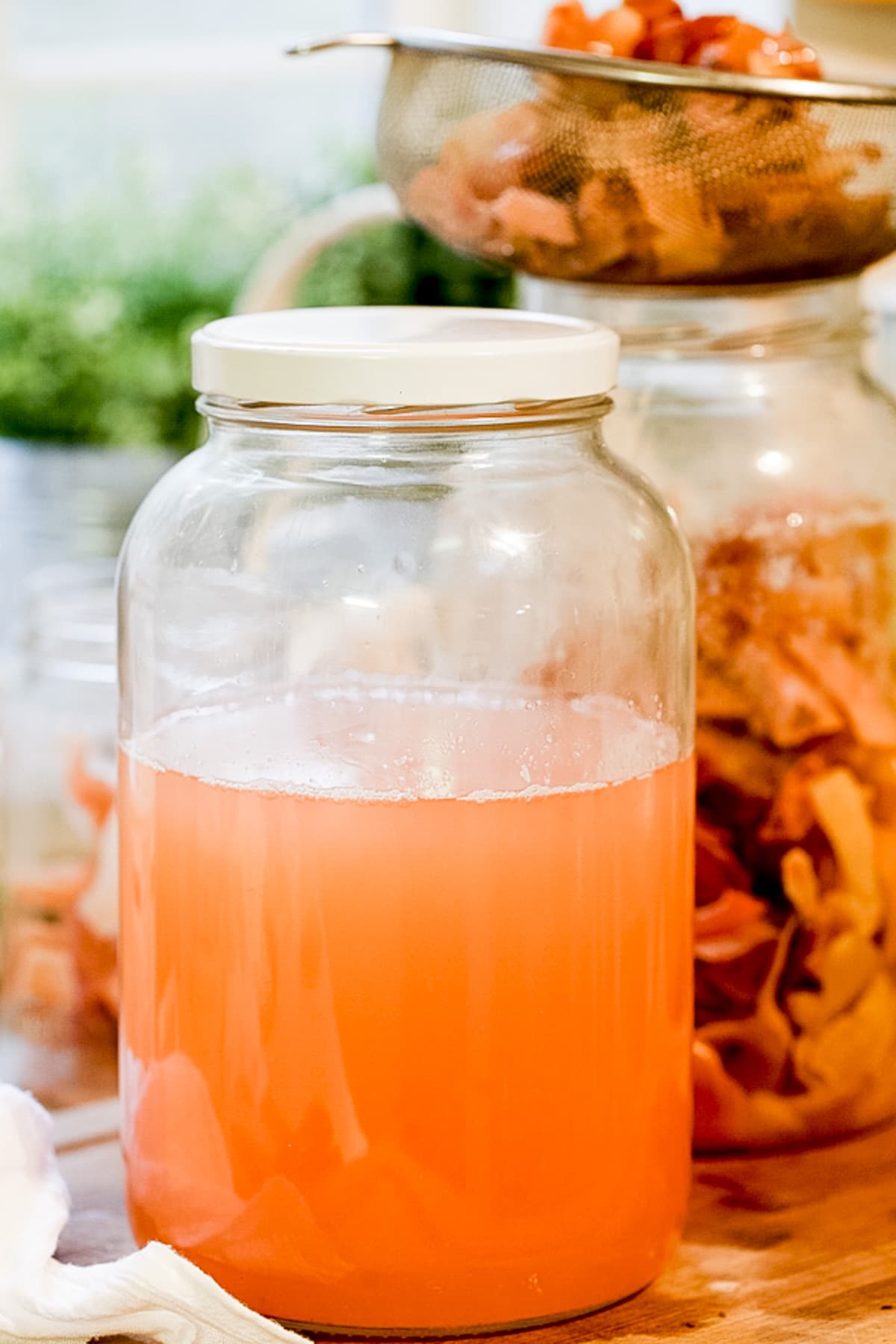

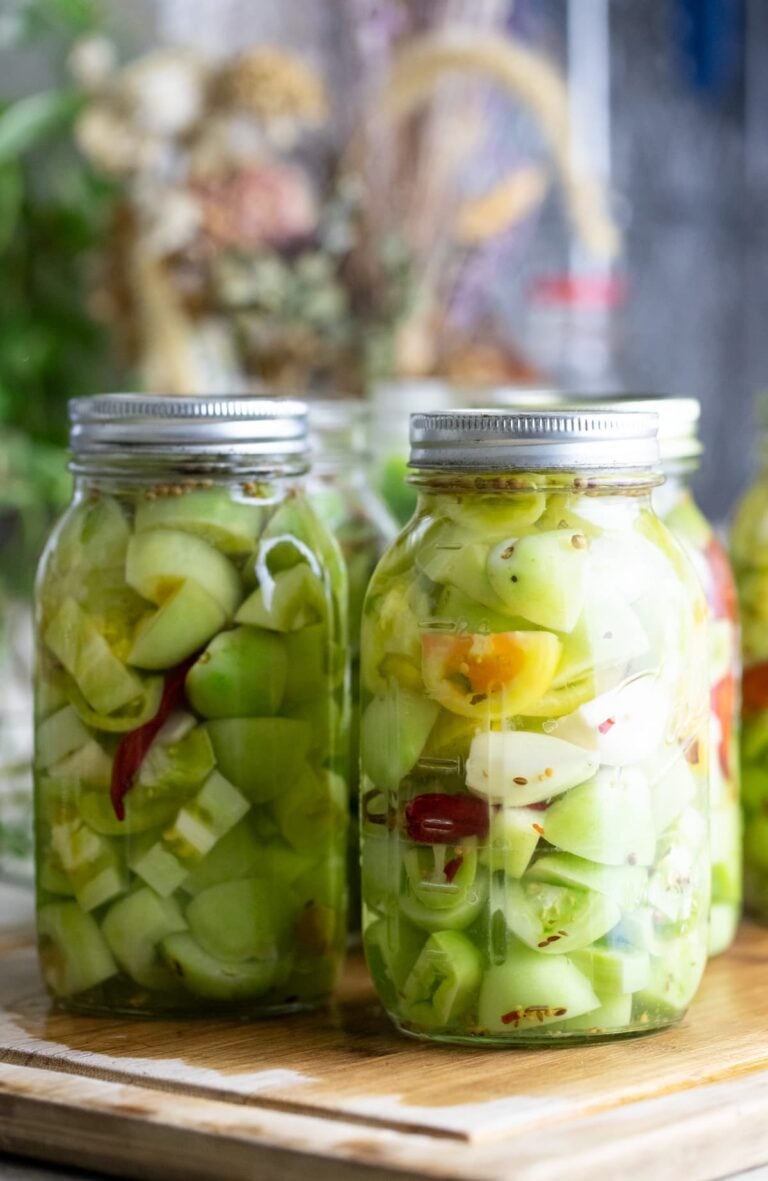

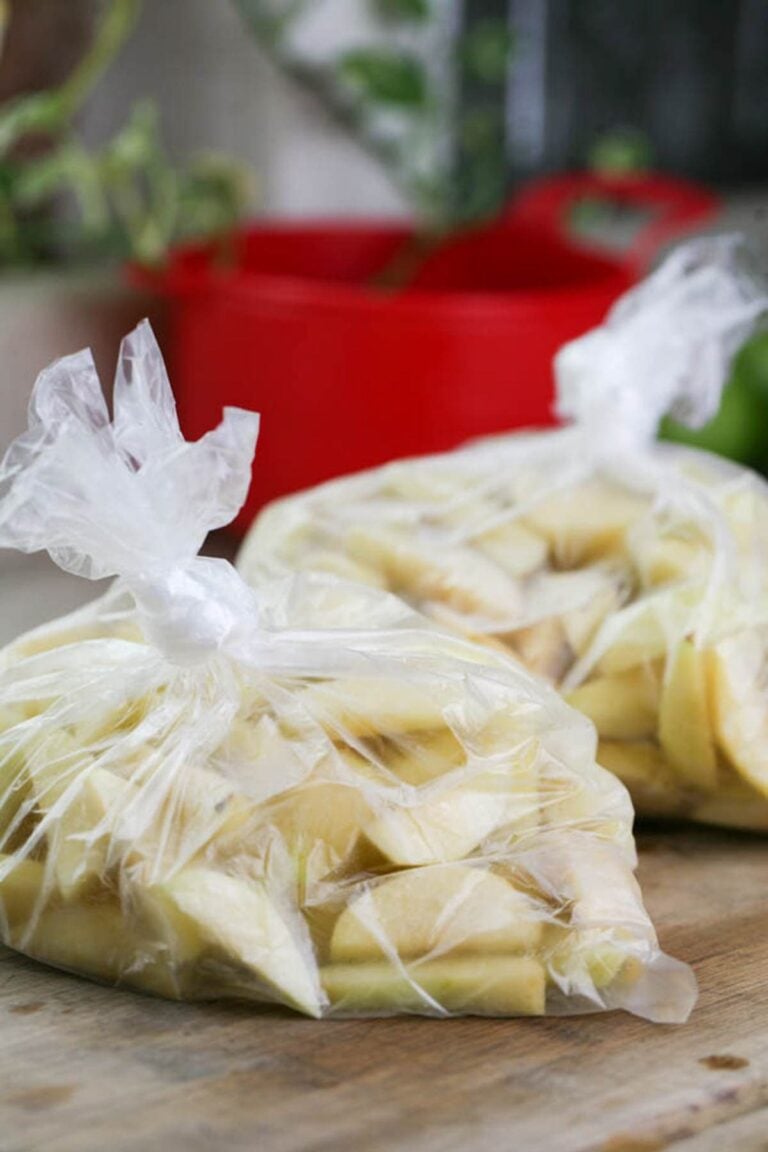
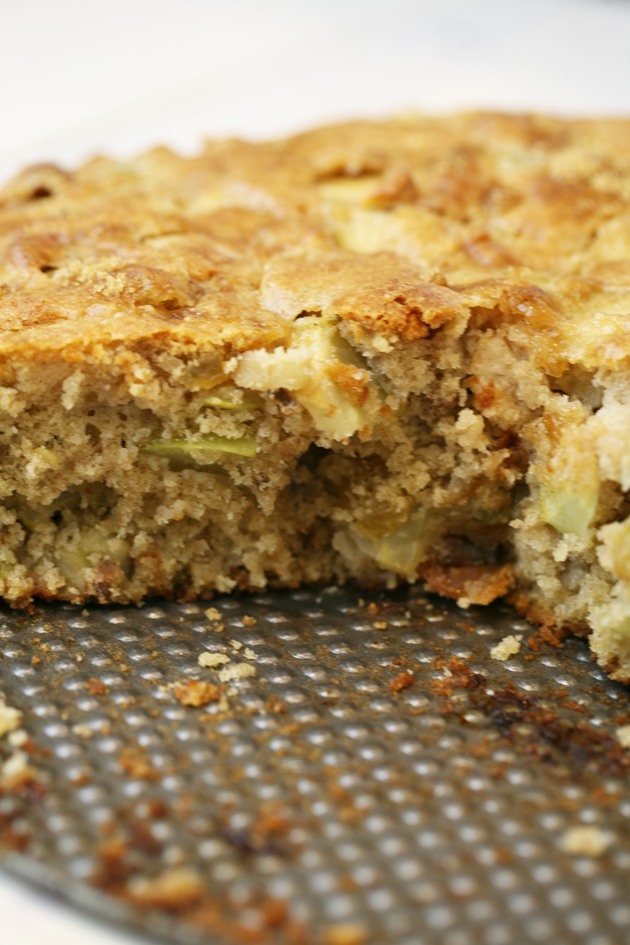

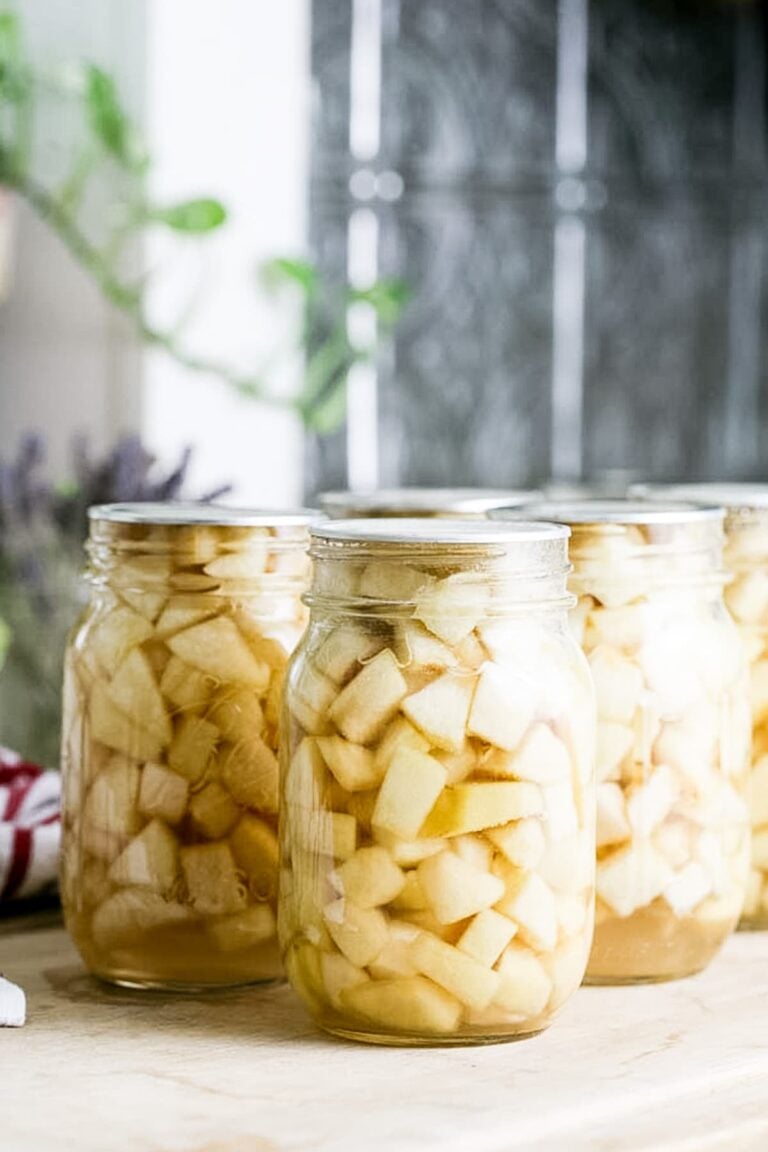
Hii, i made this recipe. I am in the 3rd week where my vinegar to be is been strained and covered again by a kitchen towel and kept in a dark place. But i noticed a white covering on the top, is it ok? Thank u
Yes, that is probably the formation of what we call a “mother”. It might get rubbery and thicken. I can’t know for sure but that’s what it sounds like. Your vinegar should be ok.
Hello! I’m trying your apple scrap vinegar! Thank you for the detailed instructions on it.
So, if there’s mold just on the top, I can just discard that (saving the mother) and filter and use, right?
Thanks so much!
Beth Johnson
Pine Country Farm
California
Yes. After filtering try to keep it in a dark location,I feel like it’s discouraging the mold from growing back again.
Hi there when making acv do I need to add a “starter fluid”/mother ?
Thank you
In this method, you don’t. Just the water and the apple scraps.
I was only able to fill a giant jar about 1/2 way ….does it need to be 3/4 full? Or is 3/4 full the maximum that you should have ?
You want the right ratio of sugar water to apple scraps to make good and strong vinegar. So if you filled the jar half way with apple scraps, fill it about 3/4 full of sugar water. That should be fine.
I tried this and got what seemed like a good ferment—the jar overflowed a little, but it’s been about a month and it doesn’t smell or taste quite like vinegar, more like a weak beer. Any idea what I’ve done wrong?
Hi Kate, did you use organic apples?
Quick question – can you do this recipe for any fruit, i.e. pears?
Honestly, I’ve never tried. But I’ve never seen it done with any other fruit…
Hi, thank you for sharing.
I was told that I can use the whole apple. Would that be a correct option, or not?
I have never tried with whole apples so I am really not sure.
How long will it keep for?
Mine is in the cabinet for almost two years now and looks, smells, and tastes great! I keep it at room temperature in the cabinet under my sink (so a dark place).
Do you have to use sugar ? I am sugar free could you use Pyure or honey ?
Yes, you have to use sugar. It is the food for the bacteria but all of it is fermented in the process.
Here’s a recipe that uses honey.
https://www.thehealthyhomeeconomist.com/make-raw-apple-cider-vinegar/
I make this one all the time. I also save the scoby from the top at the end of each batch and add it to the vinegar after removing the apples scraps for the remaining 2–3 weeks. It makes sure to really get those good bacteria that will turn the alcohol (the bubbles from the fungus on the apples eating the sugar/honey) into vinegar.
I’ll check it out. Thanks!
CAN YOU PLEASE SING ME UP FOR YOUR NEWSLETTERS
Sure!